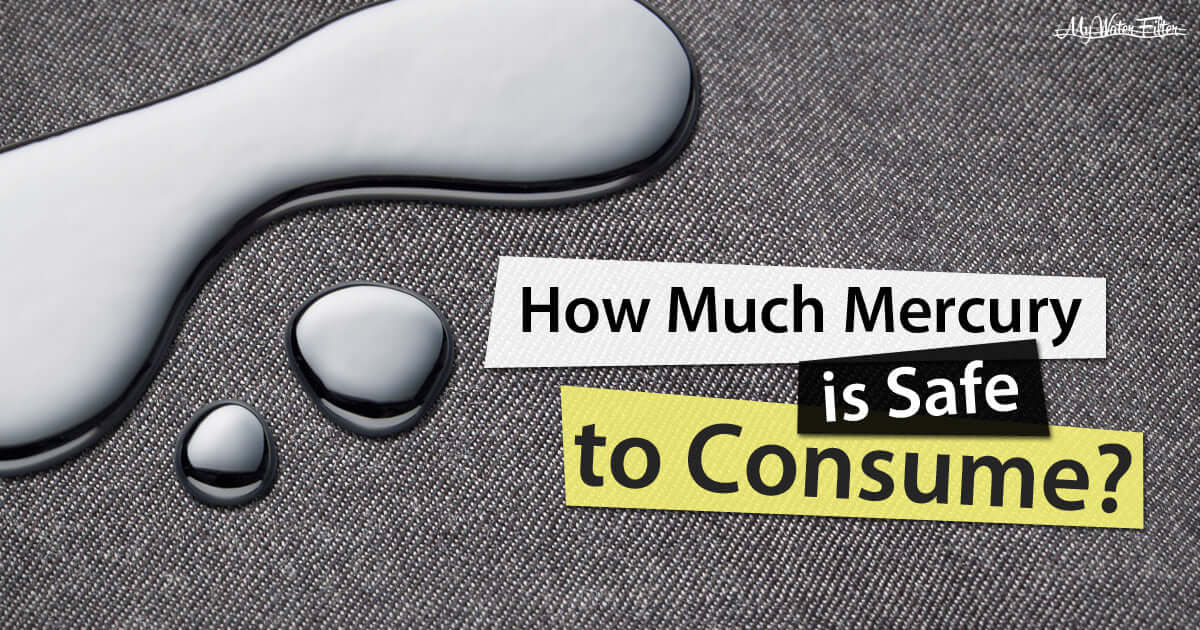Our Drinking Water Supply Is So Much Better And So Much Safer Than It Was 100 Years Ago
In this day and age, we are very aware of the potential contaminants in water that can make us sick. We have identified the agricultural chemicals that spoil our water supply. Let's not forget the waste products that some companies dump into our water supply as well!
One contaminant commonly found in rivers and reservoirs that isn’t spoken about much is Mercury, an element known as a notorious ecological and health hazard.
What Is Mercury?
Mercury is a naturally occurring heavy metal and is one of the most harmful substances present in the environment.
Mercury naturally occurs in the earth's crust in compounds found in ores and has critical industrial applications. However, through industrial activities, this mercury pollutes our water supply.
How Does Mercury Get Into Your Drinking Water?
Mercury in its metallic or inorganic form usually comes from the following sources:
- Natural deposits
- Refineries
- Landfills
- Mining areas
- Coal plants
- Farms
Who Is Responsible?
Mercury pollution begins with several industrial activities such as running coal plants, incineration of hospital waste, or manufacturing cement. These activities release mercury into the atmosphere, where it mixes with other gases in the atmosphere, which means it turns up in rain or snow, then runoff water takes it into rivers and catchments.
When factories and laboratories don't manage their waste appropriately, they can also leak mercury into the environment.
Farmers may also contribute to mercury pollution by using certain fungicides. You may also be unknowingly contributing to this through the improper disposal of these everyday household items:
- batteries
- fluorescent bulbs
- electronic devices
- old gas pressure regulators
- paint
- old TVs
- Mercury thermometers
You can find all of the above in landfills, posing a hazard to the environment, groundwater supply, streams, and water catchments.

Permissible Limit of Mercury In Drinking Water
How much mercury is safe?The ‘safe’ maximum level of mercury in drinking water is 0.001 mg/L. According to National Health and Medical Research Council, the average concentration of mercury in the community water supply is 0.0001 mg/L. State-owned water companies monitor levels of chemical contaminants, including mercury, in the community water supply to make sure they pass the Australian Drinking Water Guidelines.
What Are The Health Effects Of Mercury In Drinking Water?
At high levels of contamination, mercury can affect the nervous system causing the following symptoms:
- irritability,
- nervousness,
- changes in vision or hearing,
- difficulties with memory.
Symptoms like these due to mercury are more uncommon.
Generally, they occur after major environmental or waste disasters, but they are good to keep in mind if you think you may be suffering from mercury poisoning.
Outbreaks of methylmercury poisoning have occurred in Japan during the 1950s due to industrial waste going into rivers and coastal waters in Minamata and Niigata. In Minamata alone, more than 600 people died due to what was named ‘Minamata Disease’.
While it’s entirely possible, it’s more common for people to get mercury poisoning by eating mercury-contaminated fish than by drinking water.
You may have heard about Tony Robbins experience with mercury poisoning. Tony Robbins is the world’s most successful performance coach, author and personal development teacher.
He had been following a plant-based diet for many years and then decided to add fish to his diet. As he was eating copious amounts of tuna and swordfish, he noticed more fatigue and memory issues. His wife noticed he wasn’t behaving normally and became irritable and forgetful.
After a trip to the doctor, he was diagnosed with mercury toxicity.
While Tony’s experience didn’t come from drinking water, it illustrates that mercury poisoning is real.

What does the Australian Government do to keep YOUR water safe?
The Australian Drinking Water Guidelines require all states to ensure safe levels of Mercury and its compounds in the community water supply. If significant levels of Mercury are detected, residents in the affected areas should be notified immediately, and they should be provided with alternative, safe drinking water to mitigate health risks.
What can you do at home to reduce the chances of drinking Mercury?
The problem with state policy is that it may take time before high levels of Mercury are detected, considering monitoring is not done daily or even weekly. It could be weeks or months before you are informed that you have been consuming mercury from your tap water without your knowledge. Mercury is a highly toxic metal, and it can accumulate in your body through frequent consumption of contaminated water or food, slowly damaging your kidneys.
The solution is to install a high quality water filter at home to clean your water. Most people opt for a Benchtop Water Filter or Under Sink Water Filter.

Mercury can be removed through coagulation, granular activated carbon filtration, and Reverse Osmosis. Coagulation is a cheap and effective method that uses aluminium sulphate to bind Mercury, forming a sludge that can be easily filtered out.
Granular activated carbon filtration is effective in removing chemicals from water, including inorganic and organic mercury.
The best way to make sure your tap water is Mercury-free is to use a Reverse Osmosis filtration system. Reverse Osmosis passes water through membranes with very tiny holes, small enough for H2O molecules only, leaving out other substances.
Many advanced water filters feature reverse osmosis capabilities. Click here to read our Buyers Guide to Reverse Osmosis.








